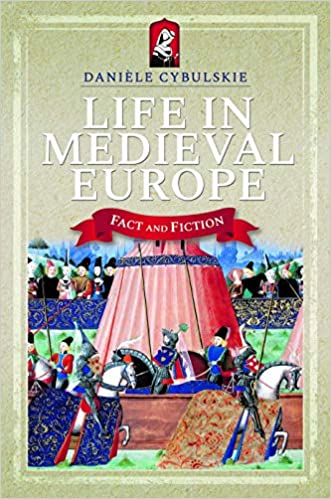
Leave it to a Muslim to strip away the myth and fantasy that define Christianity and paint a picture of Jesus of Nazareth set squarely in the reality he experienced. Reza Aslan, Iranian refugee in America, fundamentalist Christian turned Muslim, brilliant scholar of comparative religion, gives us Jesus as he really was — an illiterate first-century Jewish woodworker and day laborer consumed by revolutionary zeal to overthrow the tyranny of the Roman Empire and the parasitic priestly caste that held away over Judea from the Temple in Jerusalem.
Estimated reading time: 5 minutes
History matters
In placing the life of Jesus in context, Aslan emphasizes the significance of the first, failed Jewish revolt against Rome that climaxed in the year 73 C.E. with the mass suicide of 960 Jewish fighters holed up in the desert fortress of Masada. That revolt drew the attention of the Emperor in Rome like nothing before it in Judea had ever done. The Emperor’s embarrassment led to the dispatch of legions of Roman soldiers to the region, the utter destruction of Jerusalem, and the massacre of most of the Jewish population of all Judea.
Zealot: The Life and Times of Jesus of Nazareth by Reza Aslan (2013) 354 pages ★★★★★
Prior to 73 C.E., a bitter debate had raged within the Christian Diaspora between James, one of Jesus’ brothers and the titular head of the movement, and Paul (formerly Saul). James and his allies among the Apostles held that the belief system growing up around the teachings of Jesus were not a separate religion but simply a new form of Jewish belief and practice, that it was open only to fellow Jews, that those who followed Jesus had to adhere to the Mosaic Law in all its particulars, and that Jesus had been the messiah in the sense all Jews fully recognized: the man who would usher in the liberation of the Jewish people from Rome and the cleansing of the Temple.
Jesus recast
Paul, though himself also a Jew, insisted on opening up the faith to gentiles (non-Jews), asserted that Jesus’ Jewishness was immaterial, rejected the importance of the Mosaic Law (even going so far as to prohibit circumcision), and laid the groundwork for the deification of Jesus as the Son of God by those who wrote the later gospels of the New Testament. Aslan points out that the phrase “Son of God” had never before been meant to be taken literally; it was one of many titles assigned to Jewish kings and Roman emperors for centuries. Jesus referred to himself as the Son of Man.
It was historical circumstance, Aslan implies, that won the victory in this debate for Paul. Following their devastating defeat by the Romans, the surviving Jews would hear nothing of revolution for years to come. Jesus the gentle shepherd was a much more palatable figure for the times, and as Paul and his followers spread their message ever more widely around the periphery of the Mediterranean, the identification of Jesus with his Jewish heritage and beliefs became increasingly inconvenient. Once the Christian religion became firmly ensconced in Rome and was, first, resisted, then tolerated, and finally adopted as the official faith of the Empire, it took on more and more of the trappings and the core beliefs of the vast numbers of new converts.
Aslan calls this “the long process of transforming Jesus from a revolutionary Jewish nationalist into a peaceful spiritual leader with no interest in any earthly matter. That was a Jesus the Romans could accept . . .”
For Jesus and his contemporaries to think of himself as, literally, the Son of God would have been absurd. For the Romans and Greeks of the second and third centuries C.E. to cast him in that light was perfectly natural.
Why some Christians hate Jews
All the while the faith of Jesus was being transformed and his life rewritten, the story of Jesus’ arrest and crucifixion was also turned upside down in the later retellings of the story. The historical Jesus was arrested by Roman soldiers and crucified for sedition within days without a trial of any sort, much less a dramatic encounter with the notoriously cruel and disdainful Roman governor, Pontius Pilate.
Aslan suggests that, in the extremely unlikely event Jesus was called before the governor, he would have been asked a single question (“Are you the King of the Jews?”) and then been sent off to die. In reshaping the tale, the writers of the New Testament transformed Pilate into a meek, compassionate ruler who’d concluded Jesus was innocent of the charge of sedition, and placed all the blame on the high priest, his hierarchy in the Sanhedrin, and the Jewish people of Jerusalem. It is from these writings — all of which were intended to curry favor with the Romans — that the scurrilous charge that “The Jews killed Jesus” arose.
A long-lasting libel explored in this book about anti-Semitism
One of the sources of this long-lasting libel is the widespread belief among so many Christians that everything written in the Bible is literally true. Aslan contends, however, that “the gospels are not, nor were they ever meant to be, a historical documentation of Jesus’ life. These are not eyewitness accounts of Jesus’s words and deed recorded by people who knew him. They are testimonies of faith composed by communities of faith and written many years after the events they describe.
Simply put, the gospels tell us about Jesus the Christ, not Jesus the man.” And their authors, who were almost certainly different from the men whose names are attached to them, were entirely conscious that what they were writing were messages of faith, not factual accounts. Only in recent centuries has it become customary to draw a sharp line between myth and reality. Two thousand years ago, “the two were tied together in their spiritual experience.”
For related reading
This is one of Worthy books about Jewish topics.
You may enjoy browsing through 20 top nonfiction books about history.
If you enjoy reading history in fictional form, check out 20 most enlightening historical novels.
And if you’re looking for a broader view of human history, check out New perspectives on world history.
And you can always find my most popular reviews, and the most recent ones, plus a guide to this whole site, on the Home Page.



























